by John d’Addario via hyperallergic.com
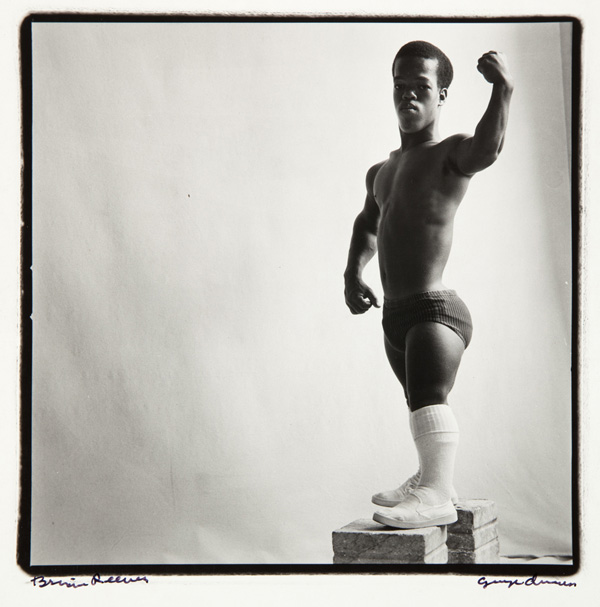
George Dureau, “Brian Reeves” (1983) (via arthurrogergallery.com)
NEW ORLEANS — When news of George Dureau’s death was announced by his gallery this past Monday afternoon, word traveled quickly among my extended circle of friends and professional acquaintances in New Orleans. Within a few hours, my Facebook feed was full of images of Dureau’s work, personal reminiscences, and links to quickly sketched obituaries (the longer tributes would come later) in the New Orleans Advocate and Times-Picayune.
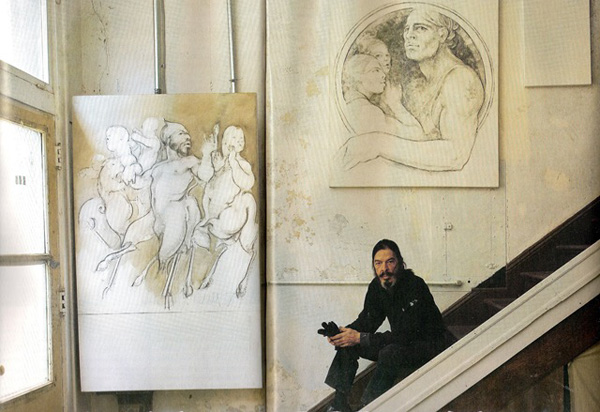
George Dureau in his French Quarter studio, 2008 (via bayoucontessa.blogspot.com)
But the news barely made it onto my Google News feed, and then only links to the above obituaries in my local news section. As I’m writing this two days later, news of Dureau’s death still hasn’t cracked the gay news headlines on the Huffington Post (where the lead articles currently trumpet Tom Ford’s marriage and a new Beyoncé interview), much less anywhere in the New York Times, whose last mention of the artist was a blurb about a gallery show in New York in 2012 where he’s curiously referred to as “a New Orleans figure painter.”
So was Dureau one of the more important American artists of his generation, or just a very important regional or “special interest” one?
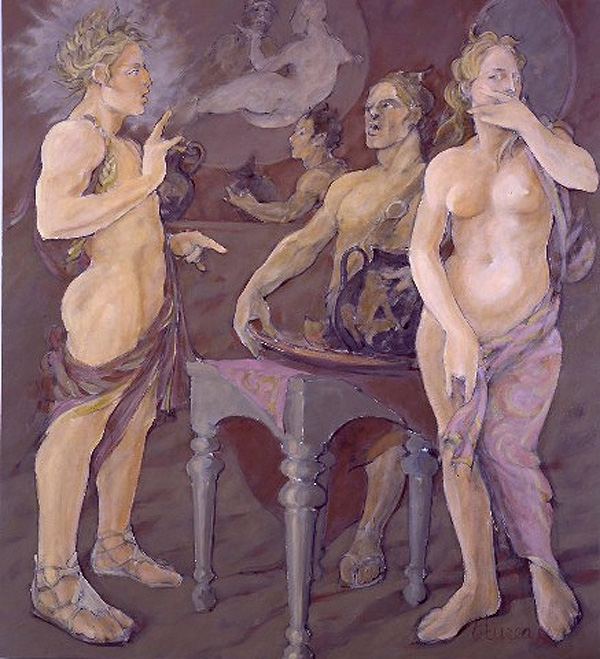
George Dureau, “Scandal at the Forge of Vulcan Cafe” (1997) (via Ogden Museum of Southern Art, New Orleans)
Certainly Dureau had many admirers beyond New Orleans, especially in photography and gay art circles. But it always seemed to me that he deserved as much of a more widespread reputation as his younger artistic contemporary Robert Mapplethorpe, who may have borrowed some of his subject matter and much of his signature style from Dureau’s work (the art historical jury’s still out on that one, but Dureau’s own observations on their relationship in this 1991 interview [PDF link] are telling.)
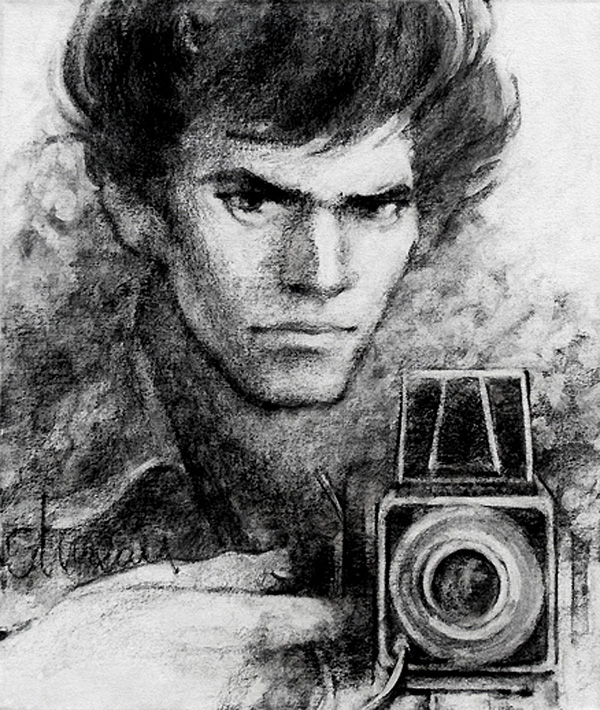
George Dureau, “Robert Mapplethorpe” (c. 1978) (via insidenola.org)
Part of the issue may have to do with Dureau’s subject matter. His body of work was explicitly homoerotic. His photographs of men — hustlers, drifters, friends and lovers, most of them nude, some of them dwarves or amputees, many of them African-American — weren’t as explicit or self-consciously provocative as Mapplethorpe’s (and thus avoided the same much-publicized controversy), but to my eyes infinitely more tender and intimate.
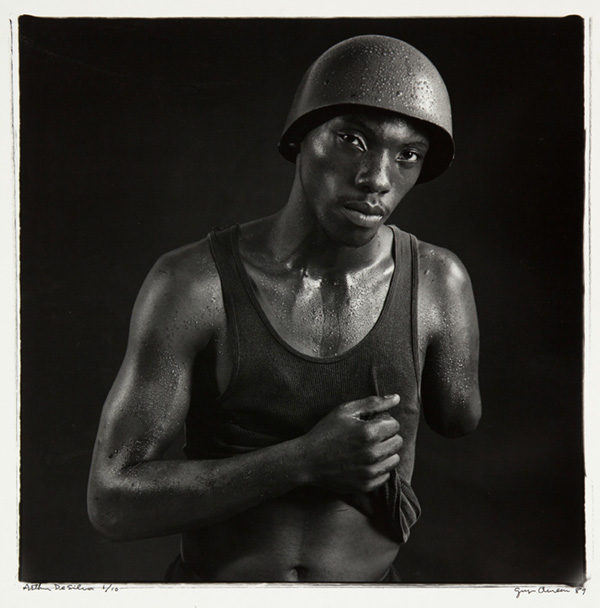
George Dureau, “Arthur Desilva” (1989) (via arthurrogergallery.com)

George Dureau, “BJ Robinson and Tex” (1981) (via arthurrogergallery.com)
And most of Dureau’s non-photographic work — his paintings, drawings, and sculptural pieces — haven’t been widely exhibited beyond a handful of New Orleans museums, galleries, public spaces, and private collections. Many of his best pieces are site-specific and emphatically local: his monumental pediment frieze at Harrah’s Casino in downtown New Orleans, his bronze gates outside the side courtyard at the New Orleans Museum of Art, his raucously elegant murals in Gallier Hall and Café Sbisa.

George Dureau (with Ersy Schwartz), “Inspiration and Technique” (1991) at the New Orleans Museum of Art (photo courtesy New Orleans Museum of Art)
But Dureau’s relative obscurity is even more likely due to his deliberate choice to make his home in New Orleans and forego a career in New York City or other more prominent art center. He was born in New Orleans’ working class Irish Channel neighborhood in 1930 and, except for his college years at LSU and a brief Army stint, made the Crescent City his home for the rest of his life.
Dureau was very much a familiar presence in the French Quarter for many years before advanced Alzheimer’s disease forced his admittance to a care facility in late 2012; as the Times-Picayune’s art critic Doug MacCash described:
“For decades, Dureau was a striking sight, bicycling or driving his black Jeep through the narrow streets of the Vieux Carre. He wore his raven hair long and he added decorative braids to his beard. His eyebrows seemed to be permanently arched in incredulity above his dark eyes and prominent nose. He spoke in a musical basso profundo warble. A friend described the overall effect as Mephistophelean.”
Like many New Orleanians, I too had had several Dureau sightings and encounters during my decade and a half in New Orleans: riding his bike around the French Quarter, a few pleasantries exchanged while waiting in line at has favorite corner deli (Matassa’s on St. Philip and Dauphine), and after a talk I gave at the New Orleans Museum of Art. But despite having several good friends in common and shared careers in the arts, I was too awed by his work and reputation to engage him in a real conversation. And that Mephistophelean gaze of his didn’t help my shyness either.
During a Carnival ball one year, though, I was drunk enough to work up the nerve to ask to take a picture of him in (fittingly) his devil costume, complete with horns and a sparkling sequined tail. I have a couple of shots of him from that evening, but my favorite is the first one I took, just as Dureau was asking me to wait a second until he grabbed his pitchfork. In the photograph, with his open mouth and outstretched hand, it looks like he’s casting a spell.

John d’Addario, “George at the St. Ann Ball” (2008)
